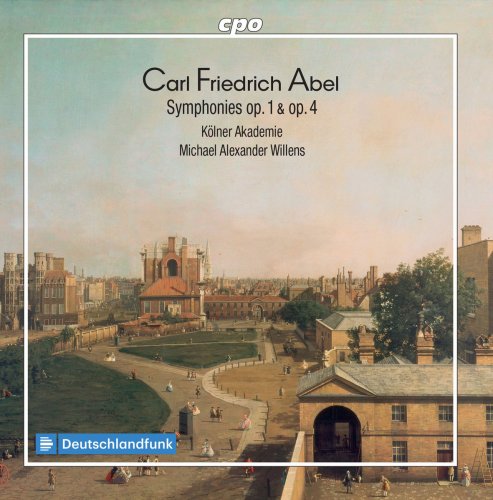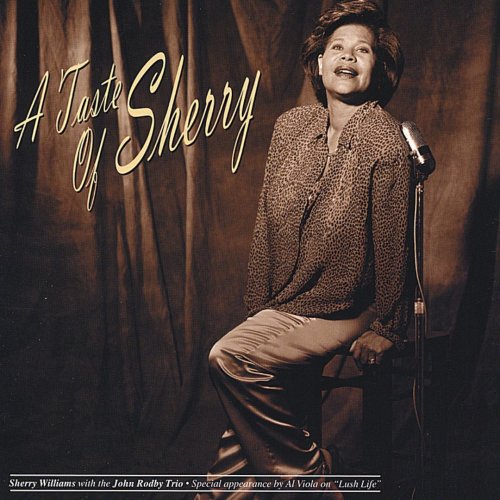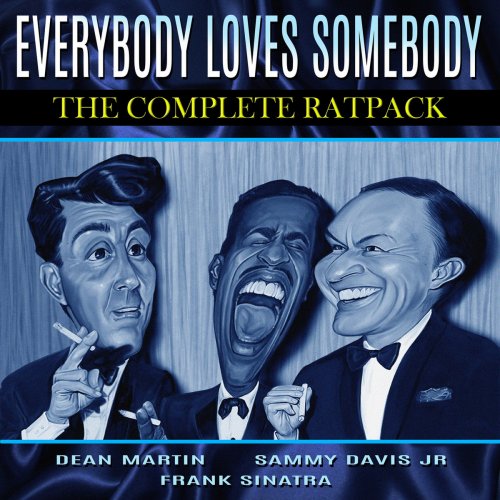Die Kölner Akademie & Michael Alexander Willens - Abel: Symphonies, Opp. 1 & 4 (2018)

Artist: Die Kölner Akademie, Michael Alexander Willens
Title: Abel: Symphonies, Opp. 1 & 4
Year Of Release: 2018
Label: CPO
Genre: Classical
Quality: flac lossless +Booklet
Total Time: 01:29:12
Total Size: 442 mb
WebSite: Album Preview
TracklistTitle: Abel: Symphonies, Opp. 1 & 4
Year Of Release: 2018
Label: CPO
Genre: Classical
Quality: flac lossless +Booklet
Total Time: 01:29:12
Total Size: 442 mb
WebSite: Album Preview
---------
CD1
01. Symphonies à 4 parties in D Major, Op. 1 No. 3, WKO 3: I. Allegro
02. Symphonies à 4 parties in D Major, Op. 1 No. 3, WKO 3: II. Andantino
03. Symphonies à 4 parties in D Major, Op. 1 No. 3, WKO 3: III. Allegretto
04. Symphonies à 4 parties in G Major, Op. 1 No. 6, WKO 6: I. Allegro assai
05. Symphonies à 4 parties in G Major, Op. 1 No. 6, WKO 6: II. Andantino
06. Symphonies à 4 parties in G Major, Op. 1 No. 6, WKO 6: III. Menuet
07. Symphonies à 4 parties in C Major, Op. 1 No. 2, WKO 2: I. Allegro assai
08. Symphonies à 4 parties in C Major, Op. 1 No. 2, WKO 2: II. Andantino
09. Symphonies à 4 parties in C Major, Op. 1 No. 2, WKO 2: III. Allegro
10. Symphonies à 4 parties in E-Flat Major, Op. 1 No. 4, WKO 4: I. Allegro assai
11. Symphonies à 4 parties in E-Flat Major, Op. 1 No. 4, WKO 4: II. Andantino
12. Symphonies à 4 parties in E-Flat Major, Op. 1 No. 4, WKO 4: III. Tempo di menuetto
13. Symphonies à 4 parties in B-Flat Major, Op. 1 No. 1, WKO 1: I. Allegro di molto
14. Symphonies à 4 parties in B-Flat Major, Op. 1 No. 1, WKO 1: II. Andante
15. Symphonies à 4 parties in B-Flat Major, Op. 1 No. 1, WKO 1: III. Allegretto
16. Symphonies à 4 parties in F Major, Op. 1 No. 5, WKO 5: I. Allegro di molto
17. Symphonies à 4 parties in F Major, Op. 1 No. 5, WKO 5: II. Andantino
18. Symphonies à 4 parties in F Major, Op. 1 No. 5, WKO 5: III. Allegretto
CD2
01. Overture in D Major, Op. 4 No. 6, WKO 12: I. Allegro
02. Overture in D Major, Op. 4 No. 6, WKO 12: II. Andante
03. Overture in D Major, Op. 4 No. 6, WKO 12: III. Presto
04. Overture in G Major, Op. 4 No. 5, WKO 11: I. Allegro
05. Overture in G Major, Op. 4 No. 5, WKO 11: II. Andantino
06. Overture in G Major, Op. 4 No. 5, WKO 11: III. Un poco vivace
07. Overture in C Major, Op. 4 No. 4, WKO 10: I. Allegro
08. Overture in C Major, Op. 4 No. 4, WKO 10: II. Andante più tosto un poco vivace
09. Overture in C Major, Op. 4 No. 4, WKO 10: III. Allegro assai
10. Overture in E-Flat Major, Op. 4 No. 3, WKO 9: I. Allegro maestoso
11. Overture in E-Flat Major, Op. 4 No. 3, WKO 9: II. Andante
12. Overture in E-Flat Major, Op. 4 No. 3, WKO 9: III. Allegro assai
13. Overture in B-Flat Major, Op. 4 No. 2, WKO 8: I. Allegro
14. Overture in B-Flat Major, Op. 4 No. 2, WKO 8: II. Andantino
15. Overture in B-Flat Major, Op. 4 No. 2, WKO 8: III. Menuet
16. Overture in D Major, Op. 4 No. 1, WKO 7: I. Allegro di molto
17. Overture in D Major, Op. 4 No. 1, WKO 7: II. Andantino
18. Overture in D Major, Op. 4 No. 1, WKO 7: III. Presto
Composers
Abel, Carl Friedrich (1723-87)
cpo's most highly successful edition featuring the symphonies of Carl Friedrich Abel (to date, three CDs) continues with further vibrant symphonies by him, this time in an interpretation by the Kölner Akademie under Michael Willens. Around the middle of the eighteenth century the terms ‘symphony’ and ‘overture’ were synonymous. The first orchestral works published by Abel as his opp. 1 and 4 were called symphonies in Continental publications and overtures in London editions. They without exception adhered to the scheme of the short opera overture in three movements with an animated first movement, a slow movement, and a finale of dance character. The symphonies forming Abel’s op. 1 were published in Amsterdam and London around 1760 and must have represented the first fruits of his activity in London. His op. 4 published in various European cities was even more popular. These compact works always begin with a first movement in sonata form and then continue with a highly appealing andante or andantino followed by a dance, which is often in triple time. This music is situated in the fascinating transitional phase between the Baroque world of George Frideric Handel and Johann Sebastian Bach and the classical style of Johann Christian Bach or Wolfgang Amadeus Mozart.




![Tomasz Stanko - Unit (Polish Radio Sessions vol. 2/6) (2025) [Hi-Res] Tomasz Stanko - Unit (Polish Radio Sessions vol. 2/6) (2025) [Hi-Res]](https://www.dibpic.com/uploads/posts/2025-12/1765796826_cover.jpg)



